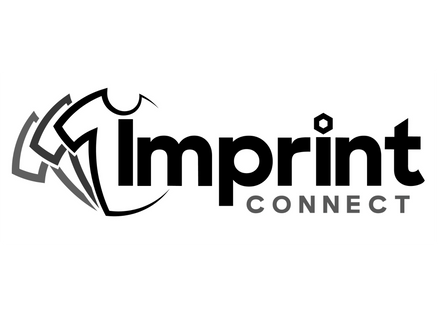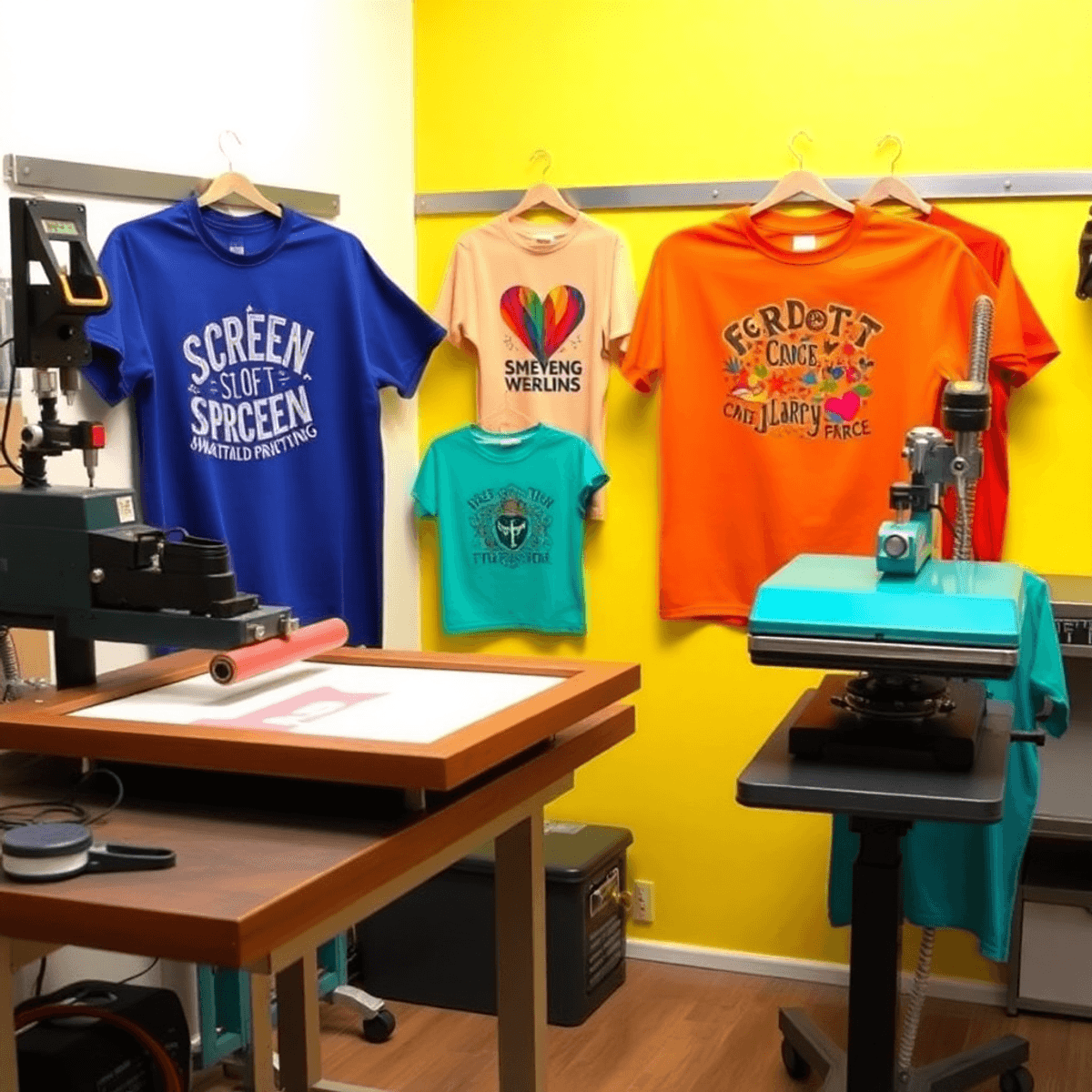In the world of clothing decoration, there's a long-standing debate: Screen Printing or Heat Press Transfers? This article aims to shed light on this discussion.
Understanding the differences between these two methods is essential for anyone looking to improve their garment customization skills, whether you're a business owner or an individual enthusiast.
We'll break down each technique, covering topics such as:
- Learning processes
- Equipment needs
- Quality comparisons
- Speed and efficiency analyses
- Financial aspects
- Impact on customer satisfaction and business growth
By the end of this article, you'll have a clearer understanding of both Screen Printing and Heat Press Transfers and how they can benefit your projects or business.
Learning Process
Screen printing has a steep learning curve, requiring a good understanding of various aspects:
- Graphic Design Skills: Understanding design principles is crucial as the process starts from creating the design on a computer.
- Ink Compatibility with Garments: Knowledge of different types of inks and their suitability for various fabrics is essential for achieving optimal results.
- Squeegee Handling Techniques: Mastery of squeegee handling techniques is vital for proper ink application and achieving desired print quality.
On the other hand, learning heat press transfers is relatively simple, focusing mainly on:
- Temperature Control: Knowing the correct temperature settings for different materials to ensure successful transfers.
- Timing Precision: Understanding the ideal pressing duration to achieve durable and high-quality prints.
Equipment Required
Screen printing and heat press transfers require different setups when it comes to equipment. Knowing what each technique needs helps you decide which one works best for your workspace and budget.
Heat Press Equipment
- A heat press machine is the core tool; it applies heat and pressure to transfer designs onto garments.
- A Teflon sheet protects the garment and ensures even heat distribution during pressing.
- This method is highly affordable for beginners, making it an attractive option for startups or small-scale operations.
- Requires minimal space, ideal for home studios or limited work areas.
Screen Printing Equipment
- A screen printing press holds the screens firmly in place for accurate ink application.
- Squeegees are used to push ink through mesh screens onto the fabric with precision.
- Convey dryers are essential for curing inks properly, ensuring durability and quality prints.
- While initial investment can be higher, better equipment directly correlates with improved output quality.
Both setups have their advantages, but space efficiency and startup costs make heat press transfers more accessible, while screen printing demands more gear but rewards with professional-grade results.
Quality Comparison
- Screen printing, a service offered by platforms like Imprint Connect, provides superior print durability, allowing designs to withstand multiple washes better than heat press transfers.
- The texture of screen printed designs is often more vibrant and integrated with the fabric, while heat press transfers can feel more like a separate layer.
- Overall, there is a notable quality difference between screen printing and heat press transfers in terms of print longevity and texture feel on garments.
Speed and Efficiency
When it comes to speed and efficiency, the production time and color complexity play a significant role in determining the best method for your needs. Heat press transfers excel in speed for low quantities, especially when dealing with designs that involve multiple colors. On the other hand, screen printing shines when handling larger quantities due to its quicker overall process.
Screen Printing
In screen printing, each step from preparing screens to aligning designs and printing can be time-consuming, particularly when dealing with intricate designs or multiple colors.
Heat Press Transfers
Conversely, heat press transfers require minimal setup time and offer a more straightforward process, making them a go-to choice for quick turnarounds on smaller orders.
Understanding the nuances of production time and color intricacies between screen printing and heat press transfers can help you make an informed decision based on your specific requirements.
Financial Considerations
Cost-effectiveness plays a crucial role when choosing between heat press transfers and screen printing.
Heat Press Transfers
Heat press equipment requires a smaller initial investment—primarily a heat press machine, Teflon sheets, and basic accessories—making it attractive for beginners or small-scale operations. However, production costs tend to be higher per item due to the price of individual transfers.
Screen Printing
Screen printing demands more substantial upfront spending on presses, screens, dryers, and inks. This investment can feel steep but unlocks significant savings in the long run. Material wastage is considerably lower with screen printing since inks are purchased in bulk and applied directly to garments.
For example:
- Producing 100 shirts with heat transfer might cost around $4 per shirt, totaling $400.
- The same order screen printed could cost between $0.25 to $0.50 per shirt, saving hundreds of dollars.
The larger the production volume, the more the profit margin favors screen printing. Bulk orders reduce unit costs through efficient ink use and faster production speeds, positioning screen printing as the more profitable option for established businesses aiming to scale.
Customer Satisfaction and Business Growth
Understanding customer preferences is crucial for delivering quality prints that resonate with clients. Some customers prioritize the feel and durability of screen printed designs, appreciating their soft integration with fabric. Others may prefer the vibrant color range and flexibility offered by heat press transfers, especially for complex, multi-colored designs on smaller orders.
Offering customization options through both methods allows businesses to adapt quickly to varying demands. This versatility helps capture a wider audience and address specific project requirements more effectively.
Screen Printing vs Heat Press Transfers
Each technique serves different needs—screen printing excels in bulk production with durable results, while heat press transfers shine in quick turnaround and detailed multicolor prints for smaller runs.
Combining these techniques can enhance brand reputation by showcasing adaptability and commitment to quality across diverse customer expectations.
Employing both methods strategically supports business growth by expanding service offerings without sacrificing print quality or customer satisfaction.
Conclusion
Choosing between Screen Printing vs Heat Press Transfers depends on your unique requirements. Reflect on these points to guide your decision:
- Assess your budget carefully; initial investment and ongoing costs vary significantly.
- Consider the volume of production you expect and the quality your customers demand.
- Think about your long-term goals—whether you plan to scale quickly or focus on small, custom runs.
Experimenting with both methods on a small scale can provide valuable hands-on experience. Seeking professional advice tailored to your business will ensure the best fit for your apparel decoration needs. Your choice should empower you to deliver quality products while supporting sustainable growth.
FAQs (Frequently Asked Questions)
What are the main differences between screen printing and heat press transfers in apparel decoration?
Screen printing involves using screens, inks, and squeegee techniques to create durable, vibrant designs integrated with fabric. Heat press transfers use a heat press machine to apply pre-printed designs onto garments, focusing on temperature and timing for application. Understanding these differences helps make informed decisions based on quality, equipment, and production needs.
Which technique is easier to learn: screen printing or heat press transfers?
Heat press transfers have a simpler learning curve, primarily requiring knowledge of temperature control and timing. Screen printing demands extensive skills including graphic design expertise, ink compatibility understanding, and mastering squeegee handling techniques.
What equipment is necessary for screen printing compared to heat press transfers?
Screen printing requires specialized equipment such as a screen printing press, squeegee, and convey dryer to ensure quality output. In contrast, heat press transfers need minimal equipment—mainly a heat press machine and Teflon sheet—offering affordability and space efficiency advantages.
How do print durability and texture compare between screen printing and heat press transfers?
Screen printing offers superior print durability with designs that last through multiple washes. The texture is vibrant and feels integrated with the fabric. Heat press transfers may feel like a separate layer on the garment and generally have less longevity compared to screen printed designs.
Which method is more efficient for different production quantities?
Heat press transfers are faster and more efficient for low quantity orders with multiple colors due to simpler setup. Screen printing is ideal for higher quantities as it allows quicker processing once screens are prepared, making it cost-effective for bulk production.
How do financial considerations affect the choice between screen printing and heat press transfers?
Heat press transfers require lower initial equipment investment and are cost-effective for small runs. Screen printing involves higher upfront costs but offers higher profit potential through reduced material wastage and benefits from bulk production economies. Considering budget and long-term goals is essential when choosing between these methods. Happy Printing, we are excited for your journey!

